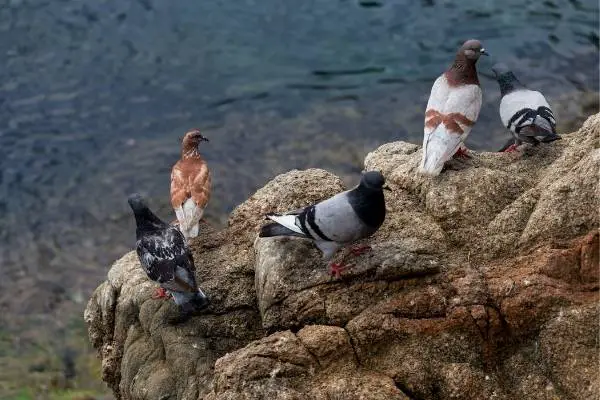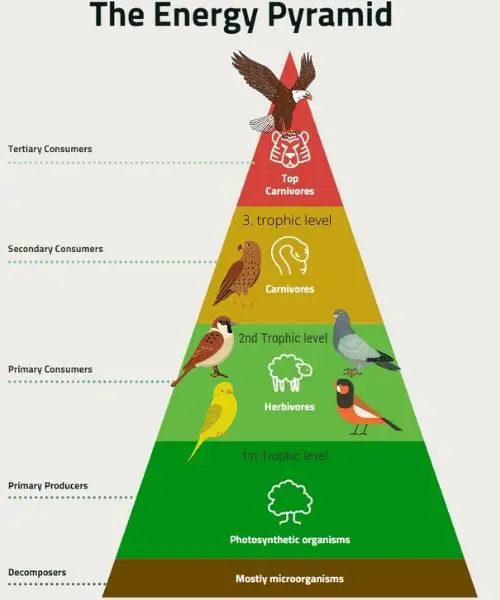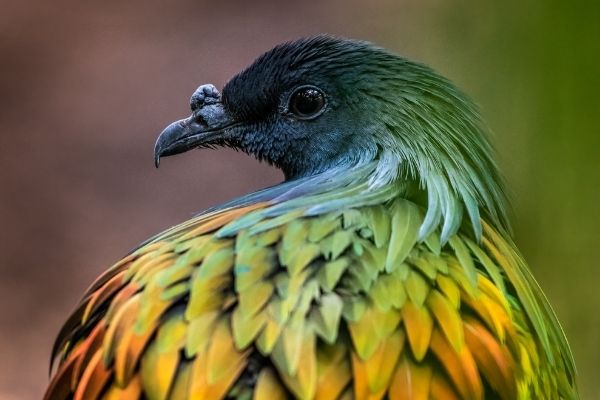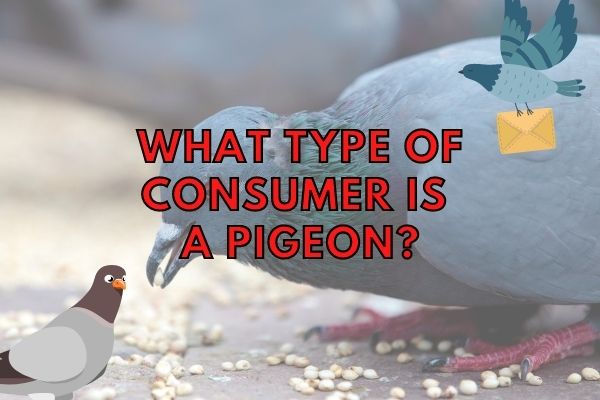Pigeons are interesting creatures that have adapted to live in cities alongside humans. Pigeons and birds are omnivores, which means they will eat almost anything. However, in the wild, their diet consists of seeds, insects, fruits and plants. It also varies a bit between species, but here I will focus on the rock pigeon most often seen in cities.
Pigeons and doves are omnivores and therefore secondary consumers. They eat mostly plants, but occasionally also insects and even dead animals. Although they might act like scavengers in big cities, they are not considered scavengers or decomposers in the classical sense.
Pigeons have been used by humans for centuries to send messages and now they are commonly seen as pests in many urban areas.
While they may not be the most popular bird around, they are still an important part of the ecosystem and help to control insect populations.
Where do pigeons find their food?
Pigeons live in flocks in trees or on buildings. They prefer to be near humans or other large animals, as they eat their droppings.
Whereas most pigeons are found in cities, and are considered pests, their natural environment contains large cliffs with similar dynamics to what they not experience in cities.

This resemblance to their natural habitat is likely part of the reason why they are now able to inhabit almost any urban niche of the planet!
What do Pigeons primarily eat?
Pigeons are mostly herbivorous birds and eat a variety of seeds, fruits, and plants. They will also eat insects and small invertebrates.
Pigeons are omnivores, eating seeds, fruits, nuts, and carrion. They eat almost anything, including food scraps, garbage, and animal feces. Pigeons eat berries, grains, and seeds from plants. They also eat insects, worms and snails.
Some of the most common food items eaten by pigeons are:
- Seeds
- Bread
- Small plants
- Insects
- Small animals
- Scraps
- Fruit
- Berries
- Carrion
- … much more!
Pigeons also need to drink water daily and will often bathe in puddles or pools of water.
Feeding Habits and Digestion of the Pigeon
Pigeons use their beak to peck at their food. They swallow their food whole without chewing – but they do make saliva! Pigeons have strong crops that partly stores and chews the food.
They digest seeds and grains in their crops first and then their stomachs from where it then pass the rest to their intestines.
Pigeons feed in flocks near trees or on buildings. They prefer to be near humans or other large animals, as they eat their droppings. Pigeons are found in many cities and are considered pests.
Are Pigeons Carnivores, Herbivores or Omnivores?
Pigeons are omnivores because they eat both plants and animals. A pigeon’s diet consists primarily of plants, but occasionally they will eat small animals like insects, worms and snails. Pigeons will also eat a variety of grains, seeds, nuts, berries, fruits and flowers.
Are Pigeons Producers, Consumers or Decomposers?
Pigeons are consumers because they acquire their energy from other living organisms. Pigeons are omnivores, which means they eat both plants and animals. Producers are plants, consumers and decomposers are all living creatures but the latter mostly microorganisms.
What Type of Consumer is a Pigeon?
Pigeons are omnivores because they eat both plants and animals. Generally, herbivores are primary consumers, omnivores secondary consumers and carnivores are tertiary consumers.
Can Pigeons be Considered Decomposers?
Pigeons are not decomposers in the classical sense because, unlike real scavengers like vultures, they do not eat dead or decaying matter as their primary food.
However, pigeons may eat dead insects or animal matter and therefore acting as scavengers, but this is not their natural diet. Bacteria in the gut of the pigeon may thus be considered decomposers.
Where are Pigeons in the Food Chain?
Pigeons are omnivores and therefore reside on the third trophic level in the energy pyramid. Although they eat both plants and animals, pigeons are not predators are carnivores.

Most herbivore birds are in reality omnivores and do not stick to any strict diet. This is especially the case for pigeons that would never let food go to waste!
Therefore they are perhaps slightly more to the carnivorous site than most other garden birds, but not as much as birds of prey or even crows and magpies.
Is a Pigeon an Autotroph or a Heterotroph?
Pigeons are heterotrophs because they eat other living organisms. Practically no animals are autotrophic because animals do not get their energy directly from the sun like plants do.
That is, animals like the pigeons cannot make their own energy, but need to eat other organisms as their energy and carbon source.
What Animals Prey on Pigeons?
Pigeons have many predators in the wild. In cities, mostly cats, dogs, raccoons and foxes hunt and eat pigeons. Even other birds like crows, ravens, magpies and hawks will prey on pigeons. However, being near humans most of the time, protects pigeons from their more shy predators!
Conclusion
In this blog post I have looked into the dietary needs of pigeons, with the primary focus on the rock pigeon mostly observed in cities.
Most pigeons are omnivores, which means they eat both plants and animals.
Pigeons are not very intelligent birds but this makes them less afraid of humans, which is a major reason for their success!
Pigeons have adapted to urban environments by becoming more tolerant of humans and learning to find food in garbage cans and on sidewalks. They are also good at avoiding predators such as cats and hawks.
Pigeons are also very social birds and often live in groups in the wild. They also form flocks in the wild, so the whole group can move together and feed together.
However, I want to emphasize that there are many different species of pigeons and they can be found all over the world.

Some of the most common species include the rock pigeon we have gone through here, but also the mourning dove, and Eurasian collared-dove and even exotic ones like the nicobar pigeon that mainly eats fruit!
In fact, the nicobar pigeon is probably the closest living relative to the legendary Dodo bird, but that’s a topic for another blog post…




